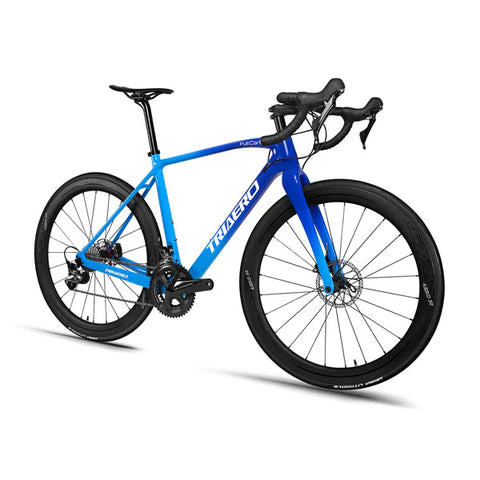Introduction to Cyclocross Racing
Over the past ten years, both amateur and professional racers have consistently found cyclocross to be increasingly popular. Combining aspects of road cycling, mountain biking, and running into exciting races performed in broad grassy fields, woodland places, and over difficult muddy or rainy terrain, the sport As racers continually dismount, carry, and remount their bikes, cyclocross calls for great bike handling abilities, strength, endurance, and explosive bursts of speed.
Usually lasting between 30 and 45 minutes, races feature 10 to 15 laps of a twisty off-road course with obstacles including logs or muddy bogs to be negotiated. For viewers, this high-intensity, technical style offers nonstop action and exhilaration. As pros fight head-to-head, usually with the winner decided by within seconds, elite events highlight amazing athleticism.
Equipment for Cyclocross
Success in cyclocross depends first on choosing the right racing gear. Although steel and aluminum have long been common choices, weight reductions and performance benefits are driving more carbon fiber frames and components to be the standard among leading rivals.
Wide tire clearances, braze-ons for fenders and racks, and perhaps front and rear cantilever brakes define cyclocross specific bikes. Common are rim or disc brakes, in which case discs are used for greater modulation and wet weather braking control. Drivetrains span single to multiple chainrings matched to a broad spectrum of cogset gears.
Usually file-tread designs between 33-40c in width to roll rapidly yet bite into different terrain, tires are where grip meets speed. Tubeless wheels offer puncture protection as well as reduced spinning mass. Standing sections are made possible by a hybrid saddle; an adjustable stem lets you ride or carry the bike in several body configurations.
Frame Materials for Cyclocross
Since steel and aluminum are seen to be durable in tough cyclocross events, they have been the most often used frame materials historically. But breakthroughs in manufacturing have made high-end carbon designs an even more appealing choice. Here is a juxtaposition:
- Though hefty, steel is robust and offers compliance over bumps by resisting impacts well. Still, the increased weight slows acceleration. Rust is another issue as well.
- Aluminum keeps strong strength while reducing weight to offer improved performance. Still, impacts can more readily ruin frames than they do steel. Another problem with aluminum over time is fatigue.
- Carbon fiber achieves a perfect performance balance—lightweight without compromising compliance, strength, or stiffness. Good lay-ups produce a somewhat robust but agile riding surface. Additionally superior to other materials in preventing corrosion and damage is carbon.
Wheelsets - An Impactful Upgrade
Competitive cyclocross racing depends critically on wheels. Wheel weight is quite essential since they constitute a significant portion of the unsprung/rotating mass of the bike. In certain terrain, hoop width, depth, and brake surface characteristics can also offer handling and aerodynamic benefits.
High-end tubular or tubeless clincher wheels sometimes combine premium hubs with carbon fiber rims for stiffness and weightlessness. While hookless bead designs speed tire installation, wide internal rim widths improve lateral stability. In grass or mud, deeper section carbon wheels cut frontal area to maximize speeds.
The ICAN AC388 Cyclocross Race Bike
With such an understanding of the demands of cyclocross, ICAN crafted the AC388 to be a premium lightweight carbon machine. Its race-tuned design focuses only on winning performance.
The secret weapon begins with an aerospace-grade Toray T700 carbon fiber monocoque frame weighing a mere 2.4 lbs. ICAN’s advanced composite construction achieves remarkable strength-to-weight without penalty to compliance.
Riders feel fully connected to the terrain thanks to a finely tuned stiffness balance enhancing power transfer. Agility through corners and over obstacles is fluid, aided by monolithic construction eliminating squeaks or flex. This nimble rig inspires confidence to attack any terrain.
A pristine Shimano Ultegra R80 hydraulic groupset paired to the frame refines shifting action. Its brake power offers pinpoint control in wet/dry conditions. T700 carbon finishing kit components like the one-bolt stem and handlebar cut grams while maintaining stiffness.
Finally, the T700 wheels finish the AC388 with industry-leading speed and excellence. Wrapped in tubeless Clement PDX file-tread tires, their 50mm depth balances aero advantage with nimble handling. Weighing only 1,380g, these tubeless carbon beauties enhance acceleration, speed, and climbing.
Its reasonable MSRP makes the AC388 attainable without compromising top-tier performance. Countless options cost far more yet cannot match ICAN’s precise overall package. Designed to win on any terrain, the AC388 sets the standard for carbon steeds achieving podiums in ’24.
In Conclusion
Bikes have to match the rising intensity, pace, and skill level of the sport as cyclocross develops. The pursuit of success demands no detail to be missed. ICAN developed the AC388 for dominating fields and fans both by using modern carbon production.
Its sophisticated carbon monocoque architecture, first-rate industry-leading carbon wheels, and premium componentry combine to create cycling's best technology into one successful blueprint. The AC388's goal is to climb, accelerate, and turn quickly through any conditions to cross the finish line first—that is, riders' ambitions realized. Get in touch with ICAN to learn about the quality of AC388 and rise to #1 in 2024.


